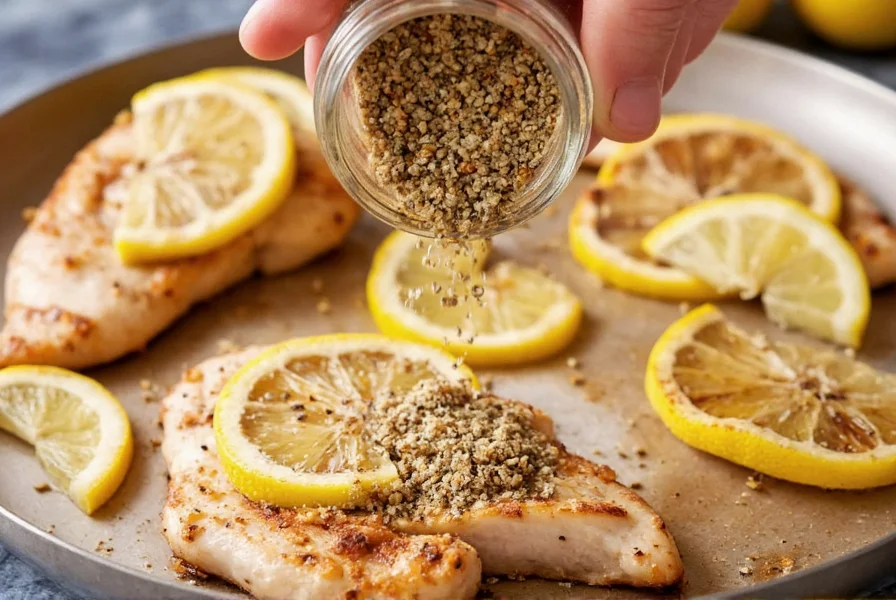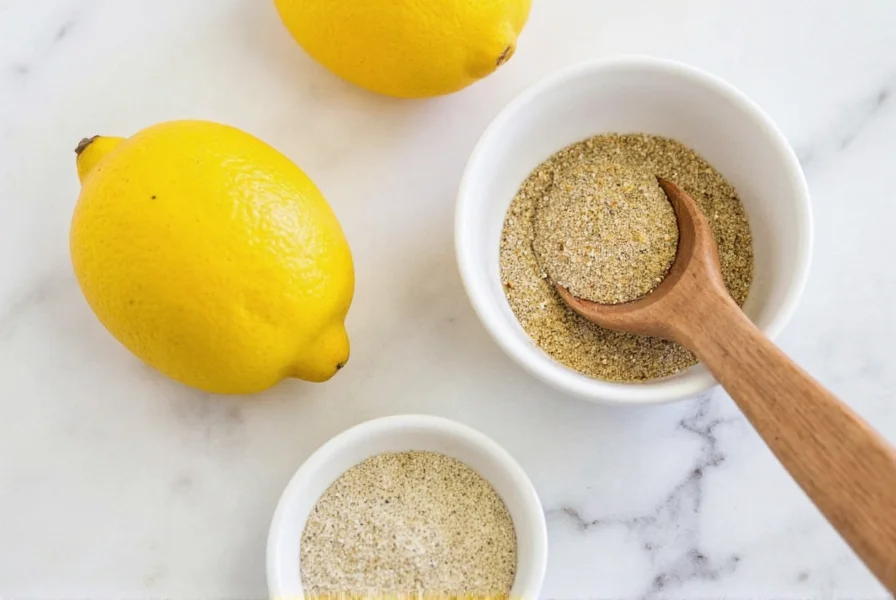Homemade lemon pepper seasoning is incredibly simple to make with just four core ingredients: dried lemon zest, black pepper, salt, and garlic powder. This basic blend requires no special equipment, takes under 10 minutes to prepare, and produces a fresher, more vibrant flavor than most store-bought versions while allowing complete control over ingredients and sodium levels.
Creating your own lemon pepper seasoning unlocks a world of culinary possibilities that commercial blends simply can't match. While store versions often contain anti-caking agents, preservatives, and inconsistent flavor ratios, homemade allows you to craft a seasoning that perfectly suits your palate and dietary needs. The difference in freshness and flavor complexity becomes immediately apparent when you use it on grilled chicken, roasted vegetables, or simply sprinkled over avocado toast.
The Essential Lemon Pepper Recipe
This foundational recipe produces approximately ¼ cup of seasoning, enough to flavor multiple meals. What makes this version stand out is the careful balance between citrus brightness and peppery warmth without overwhelming saltiness.

Ingredients
- 2 tablespoons dried lemon zest (from about 3 large lemons)
- 1½ tablespoons freshly cracked black pepper (coarse grind)
- 1 tablespoon fine sea salt
- 1 teaspoon garlic powder
- ½ teaspoon onion powder (optional for depth)
Step-by-Step Preparation
- Prepare lemon zest: Using a microplane zester, carefully remove only the yellow outer layer of 3 large lemons, avoiding the bitter white pith. Spread zest in a thin layer on parchment paper.
- Dry the zest: Air-dry for 4-6 hours at room temperature or dehydrate at 115°F (46°C) for 1-2 hours until completely dry and brittle.
- Grind components: In a small bowl, combine dried lemon zest, freshly cracked black pepper, salt, and garlic powder. Use a mortar and pestle to gently crush the mixture, releasing essential oils without turning it to powder.
- Store properly: Transfer to an airtight glass container away from light and heat. Properly stored, it maintains peak flavor for 2-3 months.
Why This Recipe Works
The magic of exceptional lemon pepper seasoning lies in understanding each component's role. Dried lemon zest provides concentrated citrus oils without moisture that would cause clumping. Freshly cracked pepper delivers complex volatile compounds that pre-ground pepper loses within days. The salt-to-pepper ratio (2:3) creates balance without overwhelming either flavor.
Professional chefs emphasize that the quality of your starting ingredients directly impacts the final product. Choose organic lemons when possible to avoid pesticide residues in the zest. For pepper, medium-dark Tellicherry or Madagascar varieties offer the best flavor complexity for this application.
Storage and Shelf Life Guidelines
Proper storage determines how long your homemade blend maintains its vibrant flavor. Consider these factors:
| Storage Method | Optimal Temperature | Expected Shelf Life | Flavor Quality Timeline |
|---|---|---|---|
| Airtight glass container | Cool, dark place (65-70°F) | 3-4 months | Peak flavor: 6 weeks |
| Refrigerated | 35-40°F | 5-6 months | Peak flavor: 10 weeks |
| Freezer | 0°F or below | 8-10 months | Peak flavor: 4 months |
Signs your seasoning has degraded include faded color, diminished aroma, or a musty smell. Properly stored, the citrus notes will gradually mellow while the pepper remains prominent.
Culinary Applications and Pairing Suggestions
This versatile seasoning shines across multiple cooking methods. For grilled proteins, apply 15 minutes before cooking to allow flavors to penetrate. When roasting vegetables, toss with olive oil first, then season to prevent burning. For soups and sauces, add during the last 5 minutes of cooking to preserve the delicate lemon notes.
Classic pairings include:
- Seafood: Sprinkle over salmon fillets before baking
- Poultry: Rub under chicken skin with olive oil
- Vegetables: Toss with asparagus or green beans
- Grains: Stir into cooked quinoa or rice
- Eggs: Add to scrambled eggs or omelets
Customization Options for Personal Preference
The beauty of homemade lemon pepper seasoning lies in its adaptability. Consider these variations based on dietary needs or flavor preferences:
- Low-sodium version: Replace salt with 1 teaspoon citric acid and ½ teaspoon potassium chloride
- Extra citrus: Add ½ teaspoon dried orange zest for complexity
- Smoky variation: Incorporate ¼ teaspoon smoked paprika
- Herb-infused: Mix in 1 teaspoon dried dill or thyme
- Heat boost: Add ¼ teaspoon crushed red pepper flakes
When adjusting ratios, remember that lemon zest provides the primary flavor note, pepper delivers heat and complexity, while salt enhances and balances. Start with small adjustments (⅛ teaspoon increments) until you achieve your preferred balance.
Troubleshooting Common Issues
Even simple recipes encounter challenges. Here's how to address frequent homemade lemon pepper seasoning problems:
- Bitter flavor: Caused by including white pith in zest. Always use a microplane and remove only yellow portion.
- Clumping: Results from moisture in zest. Ensure complete drying before mixing with other ingredients.
- Weak lemon flavor: Increase zest quantity by 25% or use Meyer lemons which have more aromatic oils.
- Overpowering pepper: Reduce black pepper by ¼ teaspoon and add equal parts white pepper for milder heat.
- Short shelf life: Store in smaller portions to minimize air exposure when opening container.
Why Homemade Outperforms Store-Bought
Commercial lemon pepper blends often contain anti-caking agents like silicon dioxide and may use lower-quality pepper that's lost its volatile oils. The drying process for commercial products frequently uses high heat that degrades delicate citrus compounds. By making your own, you control ingredient quality, avoid unnecessary additives, and create a seasoning with noticeably brighter flavor and more complex aroma profile.
Food science confirms that freshly prepared spice blends contain higher concentrations of volatile flavor compounds. A 2023 study in the Journal of Flavor Science found that homemade spice blends retained 40% more aromatic compounds after one month compared to commercial equivalents.












 浙公网安备
33010002000092号
浙公网安备
33010002000092号 浙B2-20120091-4
浙B2-20120091-4